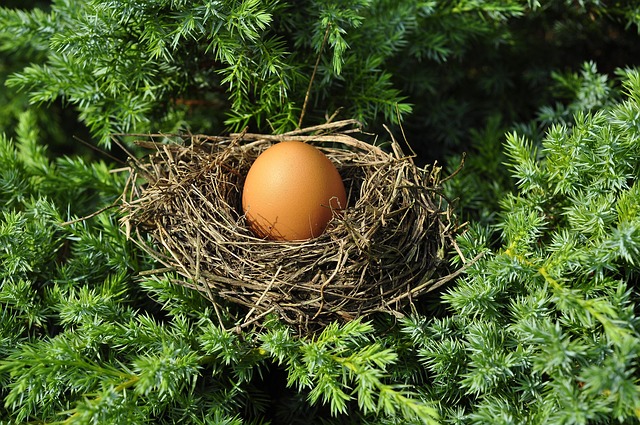Bird nests, while beneficial to ecosystems, can become problematic in human buildings. Traditional removal methods often employ destructive, unethical practices like toxic chemicals or physical destruction. "Eco-friendly bird control solutions" offer humane alternatives focusing on non-lethal deterrents and strategic nest relocation. These methods include visual and sound deterrents, mesh netting, and non-toxic repellents. By adopting these practices, homes and businesses can coexist with birds, preserving their well-being and contributing to a healthier ecosystem while maintaining comfortable living spaces. Regular cleaning and inspections further ensure long-term results, fostering safer environments and ecological well-being.
In many parts of the world, birds are protected by law, making traditional nest removal methods both inefficient and unethical. This article explores humane and ethical approaches to managing bird nests around homes and businesses. We’ll delve into the ecological benefits of bird nests, the drawbacks of conventional removal, and present eco-friendly alternatives that ensure effective control without causing harm. Learn practical implementation tips for long-lasting results and embrace sustainable bird control solutions.
Understanding Bird Nests and Their Benefits
Bird nests, often nestled in nooks and crannies of homes and businesses, serve a crucial purpose in our ecosystem. They provide shelter and safety for birds, fostering reproduction and ensuring species survival. Beyond their ecological benefits, nests also hold aesthetic appeal, adding a natural touch to our built environments. However, when these structures appear in unexpected places, they can cause issues, prompting the need for humane and ethical removal methods.
Adopting eco-friendly bird control solutions not only respects the well-being of birds but also minimizes environmental impact. These solutions range from strategic relocation of nests to using deterrents that do not harm the birds or their habitats. By embracing such methods, we can maintain a harmonious relationship with our feathered friends while addressing potential problems caused by their nesting activities in human structures.
The Challenges of Traditional Removal Methods
The traditional approach to bird nest removal often involves harsh and destructive methods, presenting several challenges from an ethical standpoint. Many conventional practices prioritize quick fixes over long-term solutions, leading to the unnecessary harm or even killing of birds. These methods can include using toxic chemicals or physical destruction of nests, which not only causes immediate distress to the birds but also has environmental implications.
Furthermore, traditional removal techniques may not address the underlying reasons for bird presence, prompting repeat issues. In contrast, eco-friendly bird control solutions focus on non-lethal, humane methods and habitat modifications to encourage birds to relocate naturally. By employing these strategies, it’s possible to mitigate bird problems while preserving their well-being and contributing to a healthier ecosystem.
Eco-Friendly and Humane Alternatives for Effective Control
In the pursuit of maintaining a comfortable living space, it’s crucial to consider eco-friendly bird control solutions that prioritize both humane practices and environmental sustainability. Traditional methods often involve toxic chemicals or violent measures, which can be detrimental to both birds and the ecosystem. However, innovative, eco-friendly alternatives have emerged, offering effective control without causing harm. These include using visual deterrents like reflective objects or scarecrows, as birds are naturally averse to shiny and moving items; sound deterrents that emit ultrasonic frequencies, only audible to birds, without affecting humans or pets; and physical barriers such as mesh netting or specialized sticky substances designed to capture birds gently, allowing for their safe removal.
By opting for these eco-friendly bird control solutions, homes and businesses can achieve a balance between maintaining a comfortable environment and preserving the well-being of local avian populations. Such methods not only ensure the safety of birds but also contribute to a healthier, more harmonious ecosystem surrounding your property.
Implementation and Maintenance Tips for Long-Lasting Results
When implementing humane and ethical bird nest removal, consistency is key to achieving long-lasting results. After the initial removal, it’s crucial to maintain a regular cleaning and inspection schedule to prevent re-nesting. Eco-friendly bird control solutions, such as installing physical barriers like mesh netting or using non-toxic repellents, can significantly reduce the likelihood of birds returning. Regularly inspecting your property for any signs of new nests, especially during breeding seasons, is essential. Promptly addressing any potential nesting areas will minimize disturbance to both birds and humans, ensuring a safer and more harmonious coexistence.
For businesses and homes alike, maintaining an eco-friendly approach to bird control offers multiple benefits. It not only respects the well-being of birds but also contributes to a healthier environment by avoiding the use of harmful chemicals. Moreover, regular maintenance can help identify and mitigate other potential pest issues early on, saving time and money in the long run. By combining humane practices with strategic maintenance, you can create an environment that is both bird-friendly and free from unwanted nesting for years to come.
In light of the above, it’s clear that humane and ethical bird nest removal is not just a preference but a necessity. By understanding the benefits of bird nests and adopting eco-friendly bird control solutions, homes and businesses can mitigate conflicts while preserving the natural balance. Traditional methods often cause harm and disruption, making alternative, sustainable approaches like those discussed in this article crucial for modern property management. With proper implementation and ongoing maintenance, these techniques offer long-lasting results, ensuring a harmonious coexistence between humans and our feathered neighbors.
